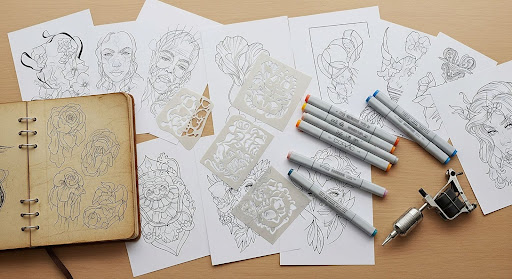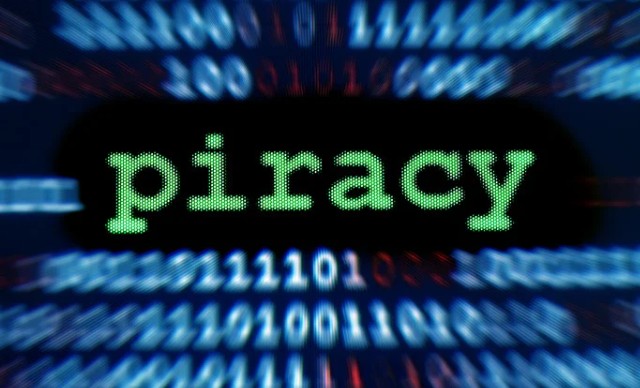
You’re scrolling through TikTok at 1:47 AM when suddenly—BAM. A three-legged shark in Nike sneakers flashes across your screen, yelling something in Italian. The sound? Unhinged. The visuals? Even worse. The caption? Something like “brainrot activated.” You laugh, you’re confused, you save the video… and now you can’t stop hearing: “Tralalero Tralala.”
So naturally, you Google it: what does Tralalero Tralala mean? And you land here, trying to decode one of TikTok’s weirdest, loudest, and most chaotic trends of 2025.
This blog isn’t just going to explain the meme. It’s going to pull back the curtain on the AI absurdity, cultural controversy, phonk remixification, and TikTok timeline behind the viral phrase that has absolutely no meaning—and yet means everything to the internet.
Is Tralalero Tralala a Real Italian Phrase?
Let’s get one thing out of the way: “Tralalero Tralala” sounds Italian, but it doesn’t mean anything directly.
The word “Tralalero” does exist, though—it’s a real musical tradition from Genoa, Italy. It refers to a style of male choral singing that mimics instruments using vocal harmonies and rhythmic nonsense syllables.
“Tralala,” on the other hand, is a universal nonsense phrase found in lullabies, nursery rhymes, and folk songs. It symbolizes whimsy, lightness, or mockery depending on the tone and context.
Put together, they create a phrase that’s catchy, melodic, and completely meaningless in standard Italian. Which, as you’ll see, is exactly what made it meme-worthy.
Where Did the Tralalero Tralala Meme Start?

The viral sound originated on TikTok in early 2025 from a now-banned account called @eZburger401. Their video featured a chaotic voiceover in Italian—part surrealist rant, part AI-generated madness.
After the original post was removed, other TikTokers like @elchino1246 and @zokashi repurposed the sound, keeping it alive. Then on January 12, 2025, @andy.promaxo posted a video of a toy “speaking” the sound, racking up over 5 million views. That’s when the phrase “Tralalero Tralala” started showing up on everyone’s feed.
Suddenly, low-effort AI images, mismatched animal creations, and surreal captions began flooding TikTok. It wasn’t just a meme anymore—it was a trend.
What Does the Full Tralalero Tralala Audio Say?
If you’re still asking what does Tralalero Tralala mean, the audio makes things even weirder. Here’s a translated (and mildly censored) version:
“Trallallero Trallalla, damn God and damn Allah. I was with my dumb kid playing Fortnite, when my grandma, Ornella Leccacappella, came in to tell us that Burger invited us over to eat a mash of d***s.”
Yes, that’s real. And yes, it’s offensive by design.
The speaker’s voice is exaggerated, the story makes no sense, and the names—like Ornella Leccacappella (which roughly translates to “c***sucker”)—are loaded with crude humor. The meme relies on shock value and over-the-top absurdity to fuel its viral appeal.
Why Is This Meme Called “Italian Brainrot”?
“Brainrot” is TikTok slang for content that’s so nonsensical, chaotic, and overstimulating that it metaphorically melts your brain. It’s not meant to teach you anything or make logical sense—it’s supposed to entertain through overload.
Italian Brainrot is a subgenre that merges fast-paced AI voices speaking exaggerated Italian with bizarre visuals, religious profanity, and meme surrealism. It often sounds like a parody of dubbed European soap operas or overly dramatic film trailers.
“Tralalero Tralala” is one of the first memes to define this genre. It sets the template: AI voiceovers, Italian inflections, cultural parody, and no real meaning.
How Did the Phonk Remix Amplify the Trend?
Then came the remix. On January 27, 2025, TikToker @dylaneficaz released a phonk version of the audio. For those unfamiliar, phonk is a gritty, bass-heavy music style that TikTok loves for its dramatic edits—think anime fights, fast cars, or sports montages.
Once the remix dropped, Tralalero Tralala wasn’t just weird—now it was aesthetic.
Suddenly, the sound was in anime edits (Dio Brando was a fan favorite), soccer highlight reels, and neon glitch compilations. The phonk version gave the meme new life and pushed it to millions of users outside the “weird meme” bubble.
The Role of AI in Creating the Tralalero Meme Universe
AI wasn’t just used to generate the voiceover. It built an entire meme universe.
From a three-legged shark in Nikes to mutated animal combinations, everything about the Tralalero trend feels AI-generated—and that’s the point. These absurd characters aren’t random; they’re algorithmically surreal.
Some TikTokers even created lore around these characters, assigning backstories to figures like Ornella Leccacappella, fictionalizing the narrator’s son, and imagining a full dinner party with Burger and the purée.
In a way, AI didn’t just assist the meme—it became the meme.
Why Is Tralalero Tralala Controversial?
The line “porco Dio e porco Allah” translates to “damn God and damn Allah,” using a slur-like phrase that deeply offends both Christian and Muslim communities.
In Italy, blasphemy in humor isn’t new. It’s often used for shock comedy or satirical commentary. But when exported globally via TikTok, cultural boundaries blur, and controversy follows.
Many viewers flagged the sound as offensive. Others bleeped or cut it in their edits. TikTok moderators removed several videos that used the full audio, though censored versions still circulate widely.
How “Tralalero Tralala” Created Its Own Meme Subculture

The meme didn’t stop at viral sound. It evolved into a subculture.
Fans started remixing it, making fake interviews with the characters, creating AI art, designing bootleg merch, and hosting meme battles in comment sections. It sparked a sense of community among people who understood the absurd references and inside jokes.
It’s not just a one-off trend—it became a digital inside joke shared across platforms like Instagram, Discord, Reddit, and YouTube Shorts.
What Makes Nonsense Memes Like This So Viral?
You’re still here because something about Tralalero Tralala got stuck in your head. That’s the brilliance of meme culture in 2025: nonsense spreads faster than logic.
Absurdity bypasses critical thinking. It gets laughs, reactions, and shares without requiring context. In an overstimulated scroll culture, chaotic humor wins.
So while you’re still asking what does Tralalero Tralala mean, the internet has already decided it doesn’t matter—and that’s exactly why it works.
Tralalero vs Tralala: Folk Music Roots You Didn’t Know
The funny thing is, this chaotic meme actually has ties to real cultural traditions.
“Tralalero” comes from a vocal folk tradition in Genoa, Italy, where male choirs sing harmonized melodies using syllables like “tralalero” to mimic instruments. These groups were respected parts of working-class musical culture dating back to the 19th century.
Meanwhile, “tralala” or “tralalla” is more widespread—it appears in everything from German and French folk music to English lullabies. It’s filler, often associated with innocence, simplicity, or nonsense.
In the meme’s case, these harmless sounds were twisted into viral absurdity. It’s cultural remixing at its weirdest.
Timeline of the Meme: From Obscure Sound to Global Trend
To really appreciate how fast this trend spread, here’s a breakdown of its key moments:
- January 8–10, 2025: The first TikToks using the sound appear via @elchino1246 and @zokashi.
- January 12: @andy.promaxo posts a viral toy video with the sound—5M views.
- January 13–24: AI animal mashups and low-effort edits flood the feed.
- January 27: @dylaneficaz drops the phonk remix—takes the meme to a new level.
- February 8 onward: Massive anime and football edits use the sound, skyrocketing popularity.
- March 2025: The meme is featured in articles, trend roundups, and explainer blogs like this one.
Frequently Asked Questions
Does Tralalero Tralala have any meaning in English?
No, it has no direct meaning. The phrase is built from musical-sounding nonsense. Its cultural significance comes from how it’s used in memes, not from language.
Is the Tralalero Tralala meme offensive?
Yes, especially the part that insults both Christian and Islamic deities. While some see it as satire, others find it deeply disrespectful.
Why is everyone using Tralalero Tralala in anime and soccer edits?
A phonk remix made the sound popular in high-energy video edits. Its dramatic tone pairs well with action sequences and glitch visuals.
Who is Ornella Leccacappella and is she real?
Nope. She’s a fictional grandma from the original audio, invented for comedic absurdity. Her name is vulgar wordplay in Italian slang.
What is Italian brainrot and how is it different from other meme trends?
It’s a TikTok meme style that blends chaotic Italian speech, surreal AI visuals, and cultural parody. It’s louder, faster, and weirder than most meme genres.
Final Thoughts
So, what does Tralalero Tralala mean?
Technically, nothing. But if you’ve made it this far, you already know that memes aren’t about definitions—they’re about energy. The kind of chaotic, culture-breaking energy that only the internet can deliver.
Whether you see it as nonsense, art, or just brainrot, Tralalero Tralala is a perfect snapshot of the absurd genius of viral culture. And the next time you hear it? You’ll know exactly what kind of rabbit hole it came from.







